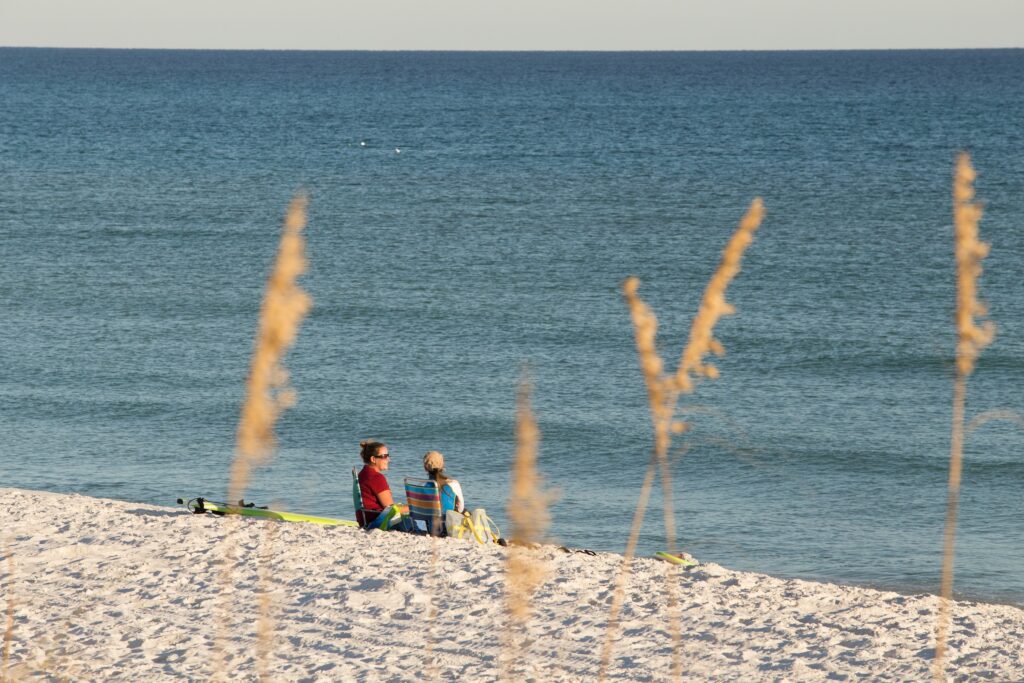By Megan Winslow, UF/IFAS Communications
When it comes to waterfront property, coastal Floridians are significantly more satisfied with natural shoreline solutions compared to artificial ones, according to a new study helmed by UF/IFAS researchers.
Although the finding specifically relates to nature-created shorelines like beaches and wetlands, lead study author Savanna Barry considers it an encouraging sign for the adoption of living shorelines. Unlike armored shorelines like seawalls or bulkheads, living shorelines offer flood and erosion protection without disrupting waterflow and marine life. Consisting of natural materials like plants, rocks and oyster shells, they provide fortification at a fraction of the cost.

“If we can leave shorelines natural in the first place, that’s best, but living shorelines can be a way to move the needle in the right direction,” said Barry, a regional specialized agent with Florida Sea Grant based at the Nature Coast Biological Station in Cedar Key.
Barry’s study gauged perceptions of four types of shorelines: armored, living, natural and hybrid, the last of which mixes artificial and natural elements. She and her colleagues surveyed owners of waterfront, single-family homes in the Panhandle, Indian River Lagoon and the Tampa Bay regions through emails and postcard mailers. Among 322 respondents, 54.9% had armored shorelines, 9.3% had living shorelines, 16.7% had natural shorelines and 18.9% had hybrid shorelines.
Overall, respondents expressed satisfaction with whatever shoreline they had; on a scale of 0 to 10, the overall mean satisfaction score was a 7.5. But the satisfaction score for natural shorelines was 8.22 compared to 7.38 for armored shorelines, 7.29 for living shorelines and 7.42 for hybrid shorelines.
Asked to describe their decision-making process, respondents indicated durability, effectiveness and cost were their top considerations – no matter which type of shoreline they owned. Overall, they considered armored shorelines the most durable and effective at shoreline protection, but they also considered them the least attractive and least environmentally friendly options.
“Shoreline property owners may be making decisions that lead to less favorable personal and environmental outcomes based on the generally erroneous perception that nature-based shorelines are not durable or effective at preventing erosion,” according to the study.
Unlike armored structures, which are known to fail during significant weather events, living shorelines mimic natural shorelines in their ability to trap material, repair themselves and even increase in size, Barry said.

“It’s human nature to trust walls and rocks that look to be more robust and discount the fact that these natural habitats, like mangroves, marshes, oyster reefs and beaches, have persisted in this coastal zone for long before we were here,” Barry said. “Nature-based shorelines are adapted to the pressures of those coastal zones, and even if they do get damaged, they’re much cheaper to repair.”
And while respondents ranked cost as their top decision-making factor, data they provided indicates living shorelines were 8.5 times cheaper to install and 2.7 times cheaper to maintain than armored ones.
When it comes to dynamics between neighbors, homeowners generally fail to recognize that they influence each other’s shoreline decisions, according to the study’s findings. Those with armored shorelines also don’t realize the potential negative effects their chosen shoreline may have for their neighbors, including erosion acceleration and biodiversity reduction.
Of all the study’s findings, Barry said she was most surprised to learn people prefer natural shorelines.
“That’s a really nice bright spot that we can focus on: People really are happier being around nature,” she said.
Banner photo: The sun rises over reef balls forming a living shoreline in Cedar Key (UF/IFAS). This piece was originally published at https://blogs.ifas.ufl.edu/news/2024/12/18/floridians-prefer-natural-shorelines-over-armored-ones-according-to-uf-ifas-study/.
Sign up for The Invading Sea newsletter by visiting here. To support The Invading Sea, click here to make a donation. If you are interested in submitting an opinion piece to The Invading Sea, email Editor Nathan Crabbe at ncrabbe@fau.edu.


